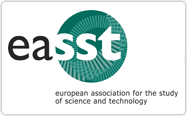Data, Methods and Writing
Methodographies of STS Ethnographic Collaboration in Practice
DOI:
https://doi.org/10.23987/sts.110597Abstract
Methods have been recognised in STS as mattering for a long time. STS ethnographies establish a boundary object with which STS scholars weave a pattern: From such ethnographic accounts we learn that knowledge is produced locally. Ethnography has over the recent decades been highlighted as a key method in STS. And that STS ethnography is specifically shaped by being often configured to consider its forms of collaboration or intervention in the field. This special issue focuses on how methods matter, specifically on how STS ethnographic collaboration and its data are translated into ethnographic writing, or performative of other reality effects. Exploring STS’s own methods-in-action brings to attention the messy landscape of method practice. Our objective in this exploration is to develop a genre of writing about method that fosters response-ability and enables the audience of research output to position themselves between the research materials and practices that were invested into the study. This special issue hopes to contribute to STS engagement with its methods by way of methodography. Methodography serves as a genre of analytic writing, that articulates specificity and scrutinises the situated practices of producing STS knowledge.
Downloads
Published
Issue
Section
License
Copyright (c) 2021 Ingmar Lippert, Julie Sascia Mewes

This work is licensed under a Creative Commons Attribution 4.0 International License.





